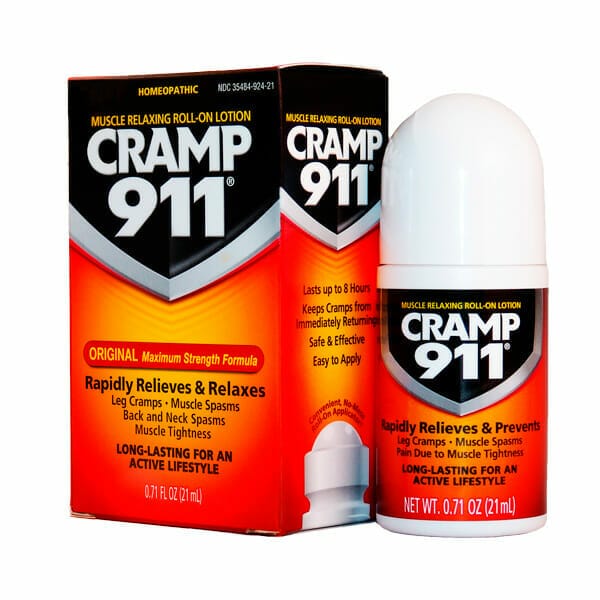It always seems to happen at the worst possible moment. You’re in the middle of an important tennis match, enjoying a beautiful hike, or simply turning over in bed when suddenly, your muscle seizes, pain shoots through your limb, and you’re left wincing and wondering what just happened.
Muscle cramps are equal-opportunity tormentors that affect people of all ages and fitness levels. But did you know that not all cramps are created equal? Understanding the difference between heat-related muscle cramps vs. regular cramps can help you prevent them more effectively and find the right treatment when they strike.

The Cramp Basics
Before diving into the differences, let’s understand what a muscle cramp actually is. That sudden, involuntary contraction of one or more muscles that won’t let go? That’s your muscle going into a spasm because of miscommunication between your nerves and muscles.
Your muscles contract and relax countless times throughout the day. Most of the time, this happens smoothly under your nervous system’s direction. But sometimes, signals get crossed, and your muscle receives an instruction to contract but doesn’t get the all-important “okay, you can relax now” follow-up message.
Heat-Related Muscle Cramps
As the name suggests, heat-related muscle cramps occur when your body is exposed to high temperatures. These cramps have some distinctive characteristics:
Causes of Heat-Related Cramps
Heat-related cramps stem primarily from two related issues:
- Excessive sweating leading to dehydration: When you sweat profusely in hot conditions, your body loses both fluid and electrolytes.
- Electrolyte imbalance: Sodium, potassium, calcium, and magnesium are crucial for proper muscle function. When you lose these through heavy sweating without adequate replacement, muscles become more prone to cramping.
Heat cramps often affect people who aren’t acclimatized to hot environments, those who don’t drink enough fluids during activity, or individuals who haven’t replenished electrolytes properly.
Who’s at Risk?
- Athletes competing in hot, humid conditions
- Outdoor workers (construction, landscaping, agriculture)
- People exercising in direct sunlight or high temperatures
- Those wearing heavy clothing or equipment in warm environments
- Individuals not acclimated to heat (like starting a summer training program)
Heat-related cramps often serve as an early warning sign of heat stress and can progress to more serious conditions like heat exhaustion or heat stroke if ignored.
Regular Muscle Cramps
Regular muscle cramps can occur regardless of temperature and have their own set of causes and triggers:
Types of Regular Cramps
- Exercise-associated muscle cramps: Occur during or after physical activity, often related to muscle fatigue.
- Nocturnal cramps: Those middle-of-the-night calf cramps that wake you from sleep.
- Medication-induced cramps: As mentioned in the product description, certain medications like statins and PPI antacids can trigger muscle cramps.
- Idiopathic cramps: These occur without an identifiable cause, though they may be related to nerve compression or circulation issues.
What Triggers Regular Cramps?
- Muscle fatigue from overuse
- Dehydration (even without heat exposure)
- Poor blood circulation
- Mineral deficiencies in your regular diet
- Compressed nerves
- Muscle strain or holding a position for too long
- Age-related muscle loss
- Pregnancy, especially in later stages
- Underlying medical conditions like diabetes or thyroid disorders
Spotting the Difference Between Heat-Related Cramps and Regular Cramps
| Factor | Heat-Related Cramps | Regular Cramps |
| Affected Muscles | During or after heat exposure | Can occur at anytime, including rest |
| Warning Signs | Often large muscle groups used in activity | Can be localized to any muscle |
| Associated Symptoms | May include headache, dizziness, nausea | Usually isolated to just cramping |
| Duration | Can be prolonged if electrolytes aren’t replenished | Often shorter in duration |
| Prevention Keys | Heat acclimation, electrolyte and sodium replacement | Stretching, adequate hydration, proper nutrition |

Expanding on Prevention
Whether you’re dealing with heat-related or regular cramps, prevention is always better than treatment.
Here are strategies for both:
Preventing Heat-Related Cramps
Prevention starts with gradually acclimating your body to hot environments before engaging in intense activity. It’s essential to hydrate strategically before, during, and after heat exposure, not just when you feel thirsty.
When you’re active for extended periods in the heat, replace lost electrolytes with sports drinks or supplements rather than plain water alone. Your clothing choices matter too—opt for lightweight, breathable fabrics that help your body regulate temperature more effectively. Whenever possible, time your outdoor activities to avoid the hottest parts of the day, typically between 10 am and 4 pm.
Finally, listen to your body and take regular breaks in shaded or air-conditioned areas to let your system cool down and recover.
Preventing Regular Cramps
Regular cramp prevention requires consistent hydration throughout your entire day, not just surrounding exercise periods. Incorporate regular stretching into your daily routine, with special attention to problem areas before bedtime if you’re prone to nighttime cramps.
Your diet plays a crucial role too—focus on maintaining balanced nutrition with foods rich in potassium, calcium, and magnesium to support proper muscle function.
Always warm up thoroughly before exercise and cool down properly afterward to prepare your muscles for activity and recovery. Working on your overall fitness can significantly reduce muscle fatigue that often leads to cramping.
If you suspect medications might be contributing to your cramps, have a conversation with your doctor about possible alternatives or supplements.
For added protection, apply preventative treatments like Cramp911 before activities or at bedtime when cramps are most likely to occur.

Effective Treatment Approaches for When Cramps Arise
Despite your best prevention efforts, cramps can still occur. Here’s how to handle them:
For Heat-Related Cramps
When heat-related cramps strike, immediately stop your activity and find a cool environment to rest. Replenish fluids and electrolytes by drinking a beverage specifically formulated with electrolytes rather than just water. While resting, gently stretch and massage the affected muscle to help it release from its contracted state.
For fast relief, apply Cramp911 directly to the cramping muscle—its specialized formula works quickly to relax the spasm. To further reduce your body temperature and prevent progression to more serious heat-related illness, apply damp cloths to your skin or use fans to increase air circulation.
For Regular Cramps
At the first sign of a regular cramp, focus on stretching the affected muscle gently but firmly in the opposite direction of the contraction.
Apply Cramp911 immediately to the cramping area for rapid relief—this works particularly well for nighttime leg cramps when you need fast results. Follow up with a gentle massage to the area, using circular motions to help the muscle fully relax.
For particularly stubborn cramps that don’t respond to initial stretching, applying heat can help increase blood flow and relax tight muscle fibers. After addressing the immediate cramp, stay hydrated to prevent recurrence, especially if the cramping resulted from dehydration.

Cramp911 Is Your Secret Weapon Against Both Types of Cramps
When it comes to effectively treating both heat-related and regular muscle cramps, Cramp911 stands out as a one-of-a-kind muscle relaxer that works rapidly to provide relief. What makes Cramp911 unique is its dual ability to not only treat cramps when they occur but also prevent them when applied proactively.
Widely regarded as one of the best homeopathic sports injury pain relief cream options available, Cramp911 is trusted by athletes and active individuals for fast, targeted relief. Whether you’re experiencing back and neck pain from muscle spasms or dealing with cramps in your toes, feet, or hands, Cramp911 provides targeted relief that works for up to eight hours when applied at bedtime or before physical activity. This makes it especially valuable for athletes of all ages and people experiencing medication-induced muscle cramps from statins or PPI antacid medications like Prilosec or Nexium.
Be Prepared, Not Scared
Understanding the difference between heat-related and regular muscle cramps empowers you to take the right preventative measures and have the proper treatment on hand. Remember that while most cramps are painful but harmless, recurrent or severe cramping might warrant a conversation with your healthcare provider to rule out underlying conditions.
Keep Cramp911 in your sports bag, bedside table, or medicine cabinet so you’re always prepared when cramps strike. With the right knowledge and tools at your disposal, those painful muscle seizures don’t have to interrupt your game, your hike, or your sleep anymore.


